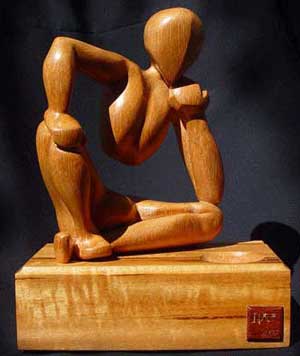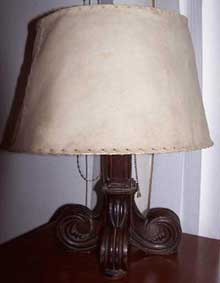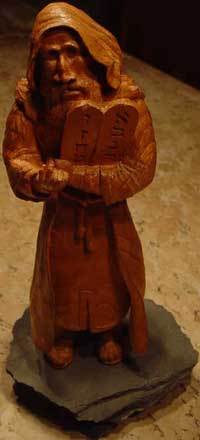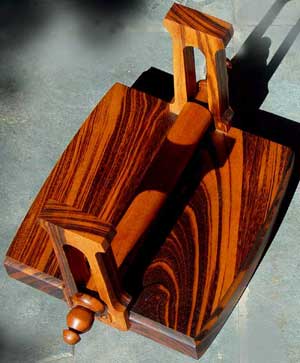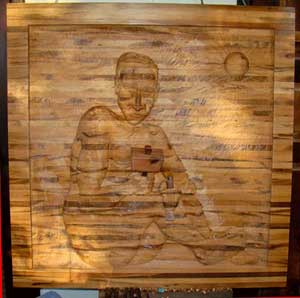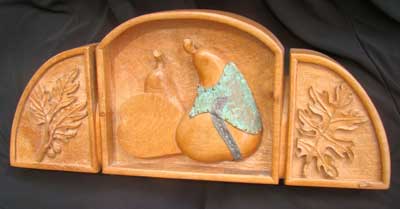
Like many others, Hector Patrucco “retired and became a woodworker.” In his case, that meant retiring to Brazil, his wife’s country of origin, from a career as an architect designing medical facilities.
“Back in the American ‘rat race,’ I worked hard and commuted a lot to support my family,” Hector said. “And, although I had ‘my garage,’ I did not have time to do woodworking.”
He had, as a boy, learned about tool usage from his father, who passed away in 1960 when Hector was 14. Hector’s dad was an electrical engineer who had graduated from a technical high school “that taught him to work on any material available at that time. In those few years I was privileged to enjoy his company, I saw him making many beautiful things with his hands.”
Hector still holds on to some of his father’s tools – as well as a lamp his dad made probably 70 years ago. Hector himself currently has a relatively small shop full of tools he’s been bringing from the U.S. “My work, though, is done by hand, mainly by carving, mostly with an unbelievable set of chisels called Stassen that were purchased in my country of origin, Argentina. They are made with the steelwork German tradition and are a pleasure to use, with a very inexpensive price.
“Carving allows me, I feel, an intimate contact with wood. Machine-work is fine and produces extraordinary pieces. But carving appeals to a creativity level that is very satisfying to me. In a way, I feel that very few things stand between me and the final piece. I guess it is the knife…
In addition, there are situations that can only be solved by hand carving.”
Although Hector’s favorite tools are German-made, purchased in Argentina, he does offer his perspective as one who has lived in both the U.S. and elsewhere, noting that, “the U.S. has the best selection of tools, reasonably priced, and a huge tradition of widespread handiwork skills. This phenomenon fosters the enormous quantity and superb quality of artists.”
In his own artwork, the woods Hector chooses for his sculpturally carved pieces often include cedar and tigerwood. “Those two types, besides their beauty and availability, have a particular stability and ease of work that is very appealing to me,” Hector said.
He does note, however, that as Brazil, like many other countries, strives to put into place environmental conservation regulations that affect certain woods, “I notice how every year that goes by experiences more difficulties to access wood.”
Hector has also sometimes incorporated other materials, such as stone or copper, into his woodwork, a choice he attributes to his curiosity. “I guess I will continue experimenting with a combo of different materials, always with a wood base or main motif. I have a lot in the ‘imagination oven’ and so little time…”
His current, in-progress work, for example, is being created for a psychologist friend. “It represents a man carving himself out called ‘Elaboration’ (an allegorical representation of what he does at work with his patients). He has reached his left leg, which will be left kind of unfinished. Right now, I like this one a lot. It is 1×1 meter, a little bit larger than three feet. It is made of 1×4 slates all glued together into a plank.”
For now, the retired architect is his own primary audience for the pieces he makes. When he gets enough of them together, he has thought about seeing if he could interest a gallery in a one-man exhibition, but says he is no hurry. “Just enjoy life as it is.”
